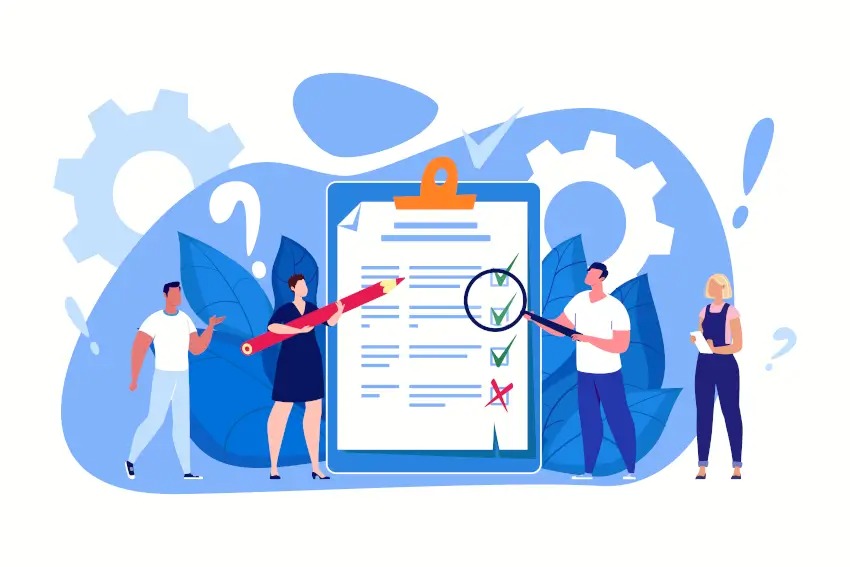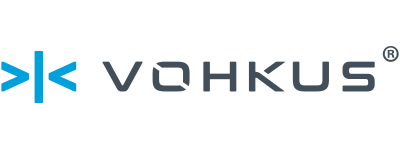How to Plan for a Successful E-commerce Website Build

In today's digital age, having an e-commerce website is a must for businesses looking to succeed online. With the rise of online shopping, customers expect a seamless and enjoyable buying experience, and having an e-commerce website can help you deliver just that. But before you can launch your new website, you need to plan for a successful build. This article will guide you through the key considerations and compare the features of three popular e-commerce platforms: Adobe Commerce, Shopify, and WooCommerce.
Planning for a Successful E-commerce Website Build
Planning is key to any successful project, and building an e-commerce website is no exception. Here are some important considerations to keep in mind as you plan for your new e-commerce website which will determine which platform will be the correct fit for your company:
Determine your goals
Defining your goals is a crucial step in building an e-commerce website that is effective and successful. It will help you identify the key features and functionality that you need to include in your website, as well as the overall strategy and approach that you should take to achieve your goals.
One of the primary goals for most e-commerce websites is to increase sales. If this is your primary goal, you will need to focus on creating a website that is optimised for conversions. This could include features like a streamlined checkout process, clear calls-to-action, and product pages that highlight the benefits and features of your products.
Another important goal for e-commerce websites is to reach a wider audience. To achieve this, you may need to focus on increasing your visibility and driving traffic to your website. This could involve implementing search engine optimisation (SEO) strategies, social media marketing, or paid advertising campaigns.
Improving customer engagement and building loyalty is another common goal for e-commerce websites. To achieve this, you may need to focus on creating a website that provides a great user experience, with features like personalised recommendations, customer reviews, and loyalty programs.
When determining your goals, it's important to be specific and measurable. This will help you track your progress and make adjustments as needed. For example, if your goal is to increase sales, you may set a specific revenue target that you want to achieve within a certain timeframe.
Choose an e-commerce platform
Choosing an e-commerce system is a crucial step in setting up your online store. With so many options available, it can be overwhelming to decide which platform is the best fit for your business. It's important to consider factors such as ease of use, customization options, scalability, security, and pricing when choosing an e-commerce system.
Adobe Commerce, Shopify, and WooCommerce are three popular e-commerce platforms that are worth considering. Adobe Commerce (formerly Magento) is a powerful and flexible platform that offers extensive customization options, making it a good fit for larger businesses with complex needs. However, it may not be the best choice for smaller businesses or those with limited technical expertise.
Shopify is a popular and user-friendly e-commerce platform that offers a range of features and integrations, making it a good choice for businesses of all sizes. Its drag-and-drop interface and pre-built templates make it easy to set up and customise your online store, while its robust app store provides additional functionality. However, Shopify's pricing can be more expensive than other platforms, especially as your business grows.
WooCommerce is a free, open-source e-commerce plugin for WordPress that allows you to turn your website into an online store. It's a good choice for small to medium-sized businesses that already have a WordPress website, as it integrates seamlessly with the platform. However, WooCommerce requires some technical expertise to set up and customise, and you may need to pay for additional extensions or themes to access certain features.
Plan your website structure
Organizing the structure of pages on an e-commerce website is essential to ensure that visitors can easily navigate and find what they are looking for. There are several different types of pages that you should consider when planning your website structure, including category pages, product pages, blog pages, marketing pages, about pages, and legal pages.
Category pages are typically used to group products or services into specific categories or subcategories. These pages should be easy to navigate, with clear descriptions and images that help visitors quickly understand what they will find within each category. It's important to ensure that category pages are accessible from the homepage and are prominently displayed within the website's navigation menu.
Product pages are where visitors can view detailed information about individual products or services. These pages should be designed to showcase the features and benefits of each product, with high-quality images, detailed descriptions, and pricing information. It's important to make it easy for visitors to add products to their cart and proceed to checkout directly from the product page.
In addition to category and product pages, you may also want to consider creating blog pages, which can be used to share news, updates, or informative content related to your products or industry. Marketing pages, such as landing pages or promotional pages, can be used to highlight special offers or discounts. About pages can be used to provide information about your company, including your history, mission, and team members. Finally, legal pages, such as privacy policies and terms and conditions, are essential to ensure that your website complies with relevant laws and regulations.
Design your website
The design of your e-commerce website is one of the most important factors that can influence its success. A visually appealing website can attract visitors and keep them engaged, while a poorly designed website can drive visitors away. Your website design should reflect your brand and create a positive impression of your business. It's important to consider the overall aesthetic, color scheme, typography, and imagery of your website to ensure it aligns with your brand.
Another critical aspect of website design is navigation. Your website should be easy to navigate, with clear menus and navigation elements that help visitors find what they are looking for. Consider organizing your products and categories in a logical and intuitive way, with easy-to-understand labels and descriptions. A well-designed website will make it easy for visitors to find the products they want and make a purchase.
Working with an experienced e-commerce agency can be a smart choice to ensure your website design is optimised for your target audience. A professional e-commerce agency like Developed with Style can help you create a website that is not only visually appealing, but also optimised for conversions. They can provide expertise in user experience (UX) design, conversion rate optimisation (CRO), and search engine optimisation (SEO) to ensure your website performs at its best.
Develop your website
Developing an e-commerce website is a complex process that involves several stages. The first stage is creating the global layout of the website. This involves designing the overall look and feel of the website, including the header, footer, and navigation menus. It's important to create a consistent and user-friendly layout that is easy to navigate and reflects your brand.
The next stage is creating the catalog pages. This involves creating product pages that showcase your products and provide detailed information such as pricing, specifications, and customer reviews. You'll need to consider factors such as product categories, search functionality, and filters to ensure that your customers can easily find what they are looking for.
Once your catalog pages are set up, you can move on to creating the landing and marketing pages. These pages are designed to attract and engage your customers, and may include features such as promotional banners, email opt-in forms, and calls to action. You'll need to consider factors such as target audience, messaging, and design to create effective landing and marketing pages that drive conversions.
Other important stages of developing an e-commerce website include creating checkout customizations, integrating third-party systems, adding shipping and payment providers, and customizing the admin panel. These stages involve ensuring that your website is secure, user-friendly, and optimised for sales. By carefully considering each stage of the development process, you can create a successful e-commerce website that meets the needs of your business and your customers.
User Acceptance Testing
User acceptance testing (UAT) is a continual process that is performed throughout the development process of an e-commerce website. It involves testing the website from the perspective of the end-user to ensure that it meets the goals set out initially and also meets the needs and expectations of the website. UAT is an essential step in ensuring that your website is user-friendly, easy to navigate, optimised for sales and ready to be released to the public.
During the UAT process, a group of users test the website in a controlled environment. These users perform a series of tasks on the website, such as browsing products, adding items to the cart, and completing a purchase. The testers are then asked to provide feedback on their experience, including any issues they encountered, suggestions for improvement, and overall satisfaction.
The feedback received during the UAT process is used to identify and address any issues or areas for improvement in the website. This can include anything from design and navigation issues to technical glitches or problems with the checkout process. By addressing these issues before launching the website, you can ensure that your customers have a seamless shopping experience and are more likely to return to your website in the future.
Choosing the Right Hosting Package
Selecting the right hosting package for your e-commerce website is crucial for its success. With so many options available, it can be difficult to determine which one is best suited for your business needs. Here are some factors to consider when selecting a hosting package for your e-commerce website.
Firstly, consider the level of traffic you expect on your website. A shared hosting package may be suitable for a small business with low traffic, but for larger businesses or those expecting high levels of traffic, a dedicated or VPS hosting package may be a better option. These packages provide more resources and ensure that your website can handle increased traffic without slowing down or crashing.
Secondly, consider the level of security you require for your website. Security is a critical consideration for e-commerce websites, as they handle sensitive customer information such as payment details. Look for hosting packages that provide SSL certificates, firewalls, and regular backups to ensure that your website is secure and protected from threats.
Finally, consider the level of support you require from your hosting provider. Look for providers that offer 24/7 support, as well as a range of resources and tools to help you manage your website. This can include features such as control panels and analytics tools, which can help you monitor your website to keep it running quickly, which in turn helps drive sales and improve the overall customer experience.
Launching Your New E-commerce Website
Launching an e-commerce website is a multi-faceted process that requires careful planning and execution. Now you have developed the website and made sure that your website is fully functional and user-friendly, it's time to launch the website and open it up to the public. This involves many steps including ensuring the hosting is in place, ensuring the latest code is deployed to your server, changing the DNS entries, etc.
Initially, you will be looking to invest in marketing and advertising for promoting your website launch, this will make your potential visitors aware of your website. Social media campaigns, email marketing, and paid advertising are just a few ways that you can generate buzz around your launch and drive traffic to your website. It's important to identify your target audience and tailor your marketing efforts to their needs and interests. By creating compelling content and utilizing a variety of channels, you can build excitement around your website launch and attract new customers to your business.
Finally, it's important to make sure that you have all necessary legal and financial requirements in place before launching your e-commerce website. This includes obtaining any appropriate licenses, setting up payment and shipping providers, and creating legal policies such as privacy policies and terms of service. By taking care of these requirements before launching, you can avoid legal and financial issues that could harm your business in the future. We have created the ultimate go-live checklist article to guide you through the process in greater detail.
Explore More with DWS
Comparing Adobe Commerce, Shopify, and WooCommerce
When it comes to e-commerce platforms, Adobe Commerce, Shopify, and WooCommerce are three of the most popular options. Each platform has its own set of features and benefits, making it important to compare them in order to determine which is the best fit for your business.
One of the biggest factors to consider when choosing an e-commerce platform is price. In the UK, Shopify's pricing starts at £25 per month, with additional transaction fees for payments made through external payment providers. WooCommerce is a free plugin for WordPress, but you will need to pay for web hosting and payment gateway services. Adobe Commerce (formerly Magento) is a more high-end option with pricing starting at £100 per month for a cloud-based solution but, depending on your needs, could be in the thousands. In addition to the platform cost, there are also development costs to consider when building an e-commerce website. Hiring an agency to develop an Adobe Commerce site will typically cost more than a Shopify or WooCommerce site due to the more complex nature of the platform.
In terms of features, all three platforms offer a range of e-commerce functionality. Adobe Commerce is known for its advanced product management features, such as the ability to create customizable products with multiple options, and its powerful import/export tool. Shopify is known for its ease of use and simplicity, as well as its built-in payment gateway, Shopify Payments. WooCommerce is known for its flexibility and customization options, as well as its seamless integration with WordPress.
When it comes to third-party integrations, all three platforms offer a wide range of options. Adobe Commerce has a large marketplace of extensions and integrations, as does Shopify with its app store. WooCommerce also has a large library of extensions available, with many free options.
Ultimately, when choosing between different e-commerce platforms Adobe Commerce, Shopify, and WooCommerce, it's important to consider your business needs and priorities. While Adobe Commerce may offer more advanced features, it may not be the best fit for a small business with a limited budget. Similarly, while Shopify may be more affordable, it may not offer the level of customization required for a larger business with complex needs. Working with an experienced e-commerce agency can help you navigate these decisions and choose the platform that is right for your business.
Why Choose Developed with Style as Your E-commerce Agency Partner?
Building an e-commerce website is a complex process that requires expertise in design and development. That's why choosing the right e-commerce agency partner is crucial to the success of your website. Developed with Style is an e-commerce agency that specialises in creating complex e-commerce websites. We may specialise in Adobe commerce but we have experience in other e-commerce platforms like Shopify and WooCommerce. Once your website is live, you need to keep it running smoothly. Developed with Style offers ongoing support and maintenance to ensure your website is always up-to-date and functioning properly. We like you to feel like we are an extension of your team rather than feel disjointed.
Building an e-commerce website is a big investment, but it's also a great opportunity to grow your business and reach new customers. Adobe Commerce, Shopify, and WooCommerce are all great e-commerce platforms, but the right choice for you will depend on your specific needs and goals. With our experience, technical expertise, and custom design services, we are the perfect partner for your website development and can guide you to make the best choice for your company. Contact us today to learn more about how we can help you build the e-commerce website your company deserves.
Related Posts
See how our digital solutions have helped businesses like yours move forward with confidence. Don’t just take our word for it, hear directly from the clients who’ve experienced the difference.
"Having successfully worked on a previous project with DWS, we were happy to partner with them again for our e-commerce transformation. From the outset, DWS demonstrated a keen understanding of our unique requirements and challenges. Their expertise in Adobe Commerce, combined with a truly collaborative approa...
"Partnering with DWS has been a massive asset to Vohkus, providing us with development expertise, training and DevOps for Magento 2. From the outset it was evident that they had multiple developers each capable of handling many of the complex requirements we could not complete ourselves. Their commitment to tr...
"Have been working with Lee from DWS for number of years. Lee has an unrivalled knowledge of all things Magento. During our migration from Magento 1 to Magento 2, he helped to shape the design and build of the new platform, and his expertise was instrumental to the success of the project. As well as offering o...
Ready to start or take your e-commerce to the next level? Every step forward matters, and we’re here to help you make it count. Get in touch with DWS to see how we can turn your digital goals into reality. Let’s shape and grow your e-commerce journey... together.





